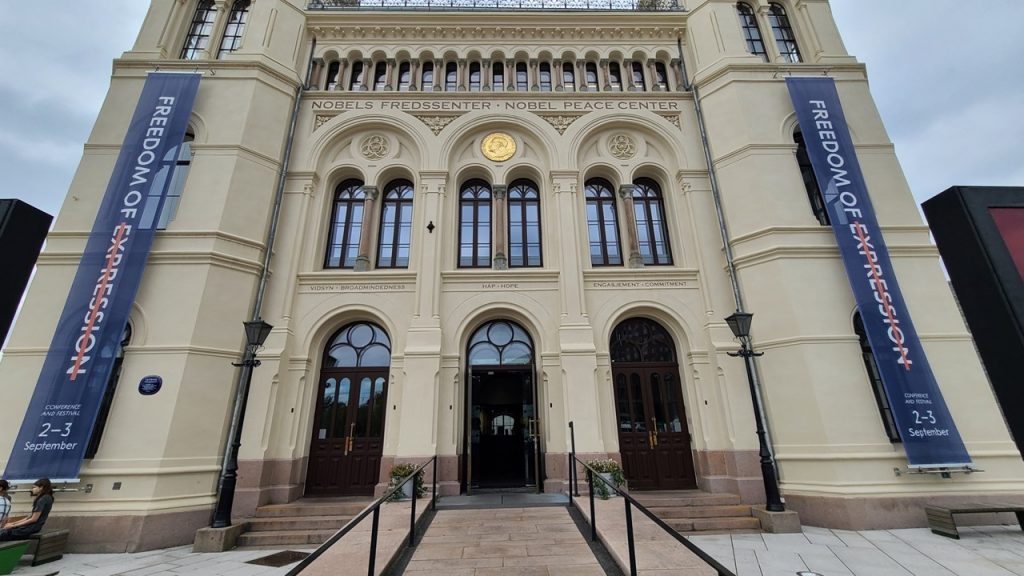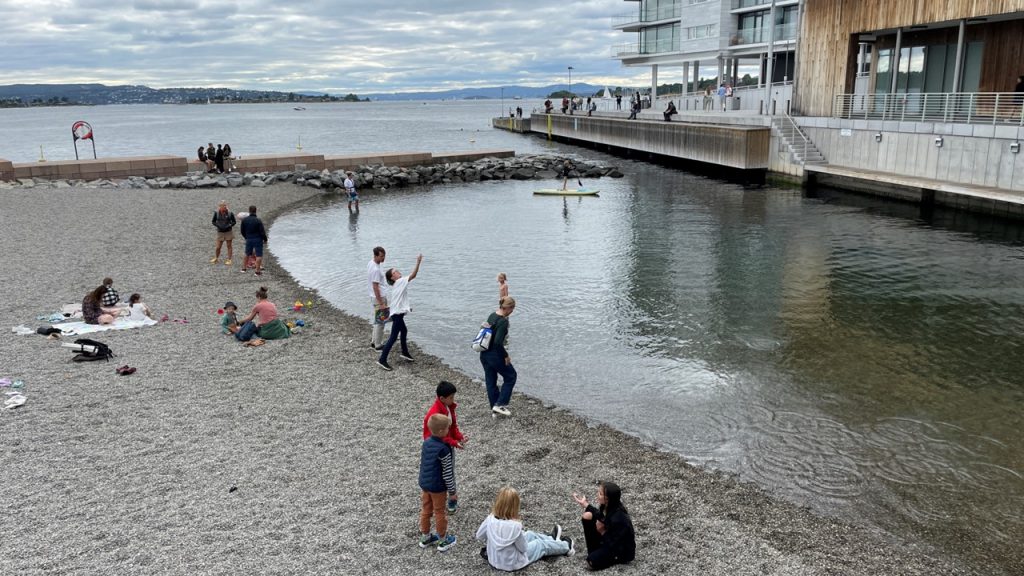Austust – September 2022
Having already visited Antarctica in 2019 and seen the southern polar ice-sheets and wildlife, we decided it would be appropriate to “go north” and explore the northern lands and view the northern polar wildlife, and thus we planned at trip to Svalbard, Norway – the furthest northern habited place on earth.
We began our trip by flying from the US to Oslo, Norway to explore this part of Norway and recover from the time change. Our group was small, ~15 people, and we quickly made our way from Oslo’s airport into town where we checked-in to the Thon Opera Hotel. Our hotel was on the harbor across the street from the Opera House, built in 2008, and centrally located near the Metro Central Station. The Opera House is constructed to be walked on its roof which is designed to represent an iceberg and the view from there shows the harbor’s art, architecture, and even its floating sauna houses. We took a walk along the harbor’s edge past the overnight ferry to Sweden, the cruise terminal (where the Regent’s-Seven Seas Splendor was docked), past the Akershus fortress’ outside walls to the town’s Nobel Peace center. After a food truck lunch, we visited the wooden carvings on outside walls and giant murals of City Hall where several weddings were in progress. Then past the National theater down Karl Johans St. looking at the gardens, shops and restaurants until we reached central station and were back to our hotel. For dinner, we decided to explore the Hammersbourg area where a large building houses the best street food in Oslo. Being Friday the place was packed with a line at the bar. There was a DJ, and 25 small food counters every kind of food (Chinese, American, Hawaiian, Argentinian, Korean! Greek, Peruvian, Mexican, etc.). Once there, we ate Japanese chicken and local beer, enjoying the scene before it converted to a nightclub.


Much of the surrounding land around Oslo Harbor has been reclaimed from the sea as much of the area was underwater. In 1980, much of it was raised 4.5 meters higher, initially with 1100 pillars driven deep into the ground on which our hotel, the Thon Hotel Opera was first erected. They found 2500 medieval boats when the land was reclaimed from under nearby Central Station, and the local harbor store house, construction 1920 was already built on 1500 pillars. In the center of the harbor is anchored a floating sculpture of an Iceberg. The harbor is busy with bars and restaurants, cruise ships, and the huge Christian Radich steel 3-masted ship that sails for tours of the fjords. Atop city hall is located15 bronze bells that ring out a concert daily at 3:00pm. All along the harbor walk are chair sculptures as a reminder of the Jews taken out of the city when the Nazi’s occupied Norway during World War II. Today still stands the Akushuss Fortress which is operated by military and has been open since 1934. Nearby is the unique Munch Museum with 28,000 pieces of his art and a top floor with a café and a view of the fjord.
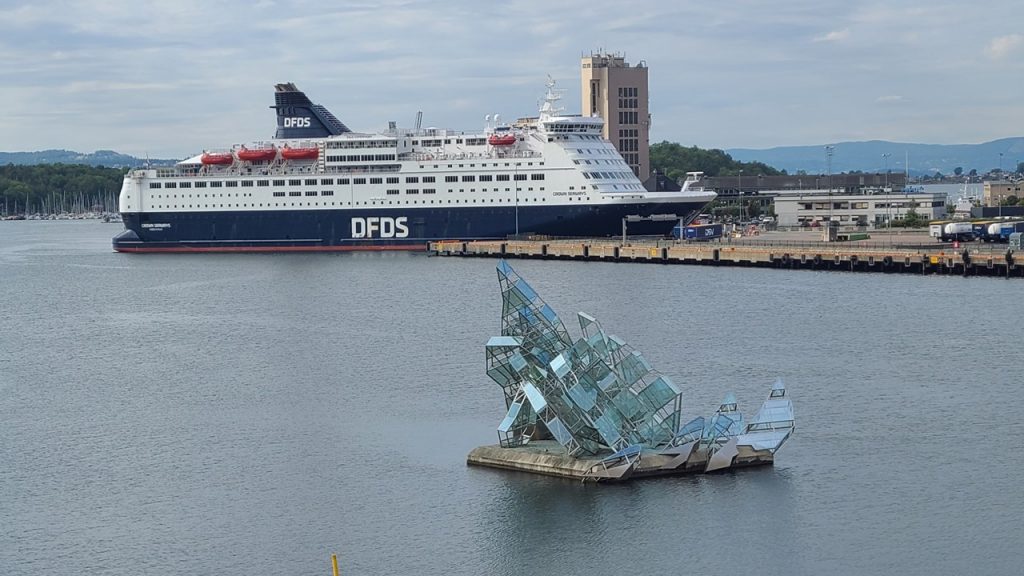

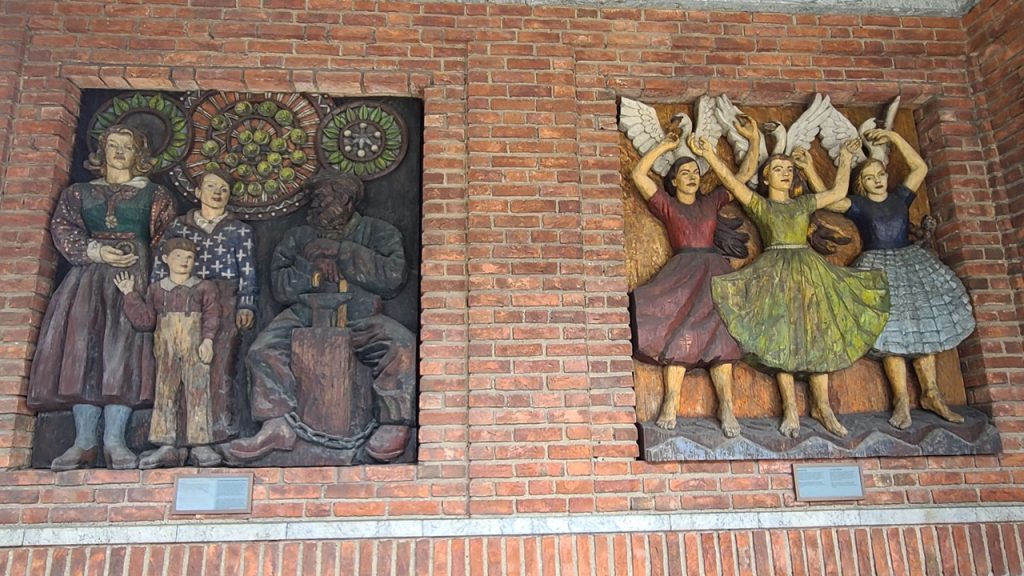
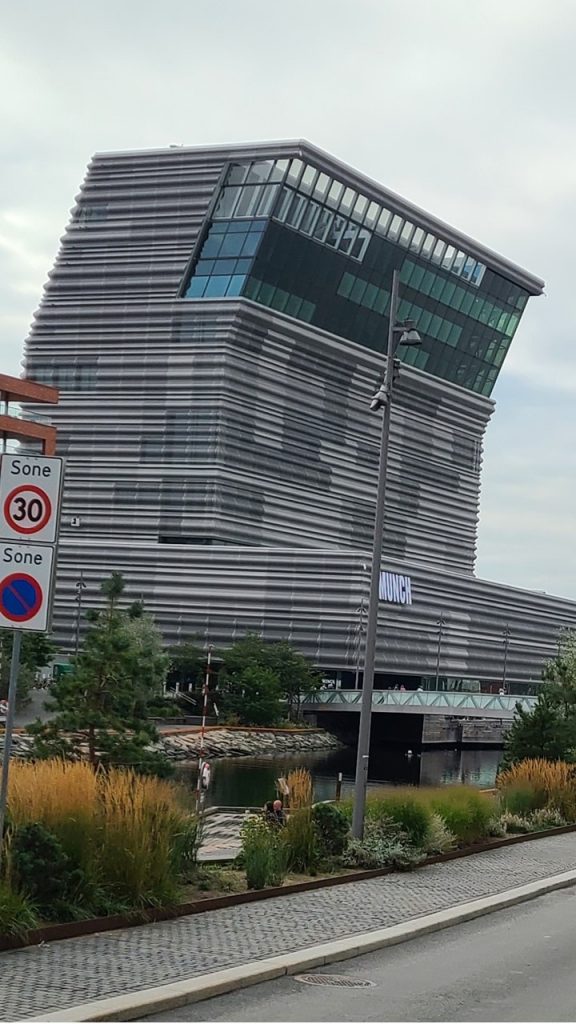
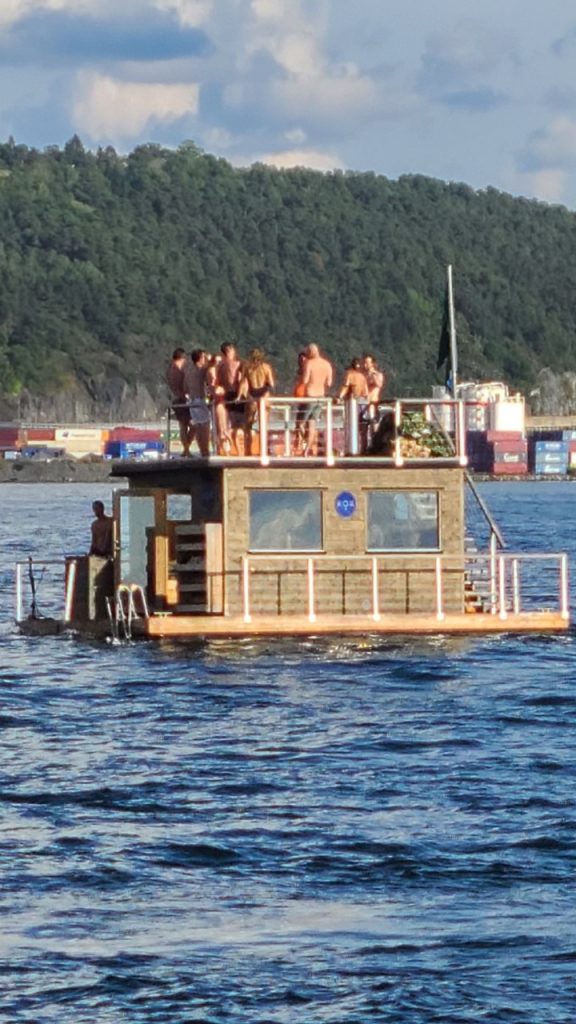
Oslo’s original name was “Kristianna” and the cathedral there is still named for it. The next day we were lucky to take a tour of the inside of the Opera house, including the many workshops that employ over 600 people in 50 different areas with 40 occupations. The Opera House holds 300 ballet and 300 operas per year with Norway’s only permanent orchestra. It cost 500M Euros to build taking 15 years just for parliament to decide on the architect and 5-years to construct. At the time, it was Norway’s single largest building and it transformed the fjord with its white Carrera marble roof that holds 5000 seated people and its inside main theater that holds 1400. It is considered one of the top-10 opera house in the world.
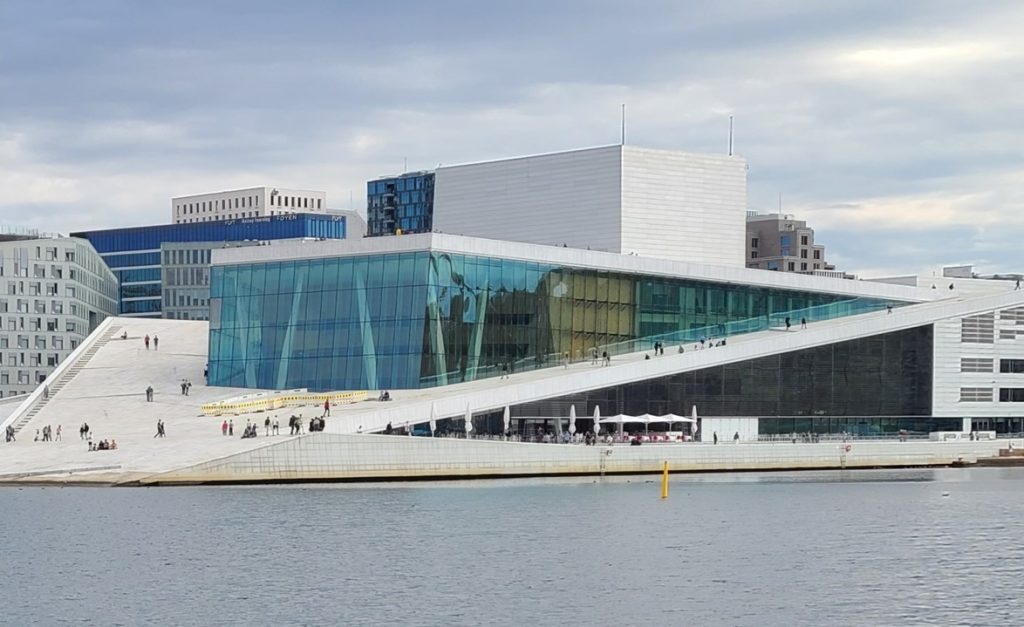
From there, we went to Vigeland Park which was designed by artist Vigeland who died in 1943 during the Nazi occupation. The park is divided into 5 sections beginning with embryo sculptures moving to child and adult, and with each sculpture in motion. At end of the bridge are grandfathers and grandchildren. There are rose gardens, mazes, and fountains. All the statues are bronz and were not destroyed by the Nazi’s. At the center of the end is a Phalanx that is 17 meters tall carved from a single 180-ton piece of granite. It took 121 sculptors working on it for 4 years.

After lunch at local restaurant, Kaffistova, we walked to the ferry terminal and bought round trip tickets to Bygdey (Museum Island which hosts the Maritime, Fram, and Kon-tiki museums. We toured the Maritime Museum where we saw the Norway boat entry from the Sydney 2000 Olympics, the oldest dugout canoe, a wonderful children’s boat exploration area, various boats recovered from the seafloor. Then we toured the Fram museum where the Fram mock-up is made for one to explore and learn about both its Arctic and Antarctica expeditions. The we explored the Kon-tiki museum where there is a Moa from Easter Island out front and the two reed boats that both failed after ~40 days at sea. There are also cave mock-ups for exploration and the balsa wood Kon-tiki which did complete the mission. We returned to Oslo via Norway Yacht as they have no ferry….and took the tram back to central station and then walked to our hotel. That night, we returned to the Oslo Street Food Center for gyros and a local beer.
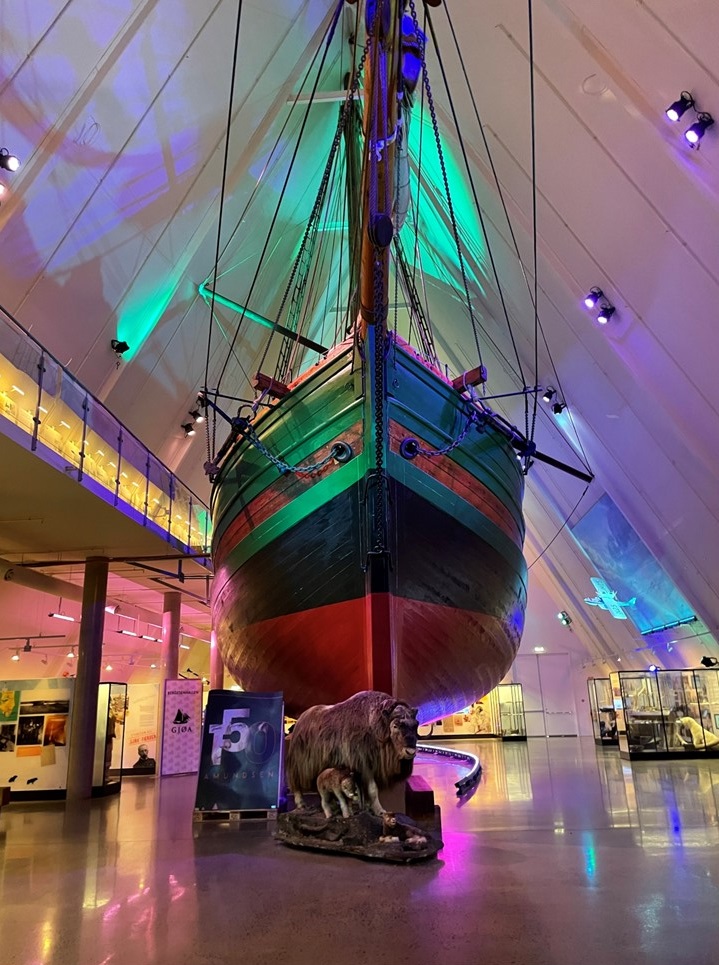
The next morning, we took the Tram from central station to the Akerhuss Fortress where we walked the various levels exploring the various viewpoints, buildings, military guards. and several cannon before we walked back to hotel. Then we traveled to the old Oppronnelige River & Sagene (sawmills) area where there were originally only two pedestrian bridges and are now 53 – 26 still for pedestrians only. In this area, the river falls 54 meters thus giving it 19 waterfalls that were historically used to power the textile industry. Between 1842 and 1900 – 40 factories were built on river for logging and for the textile industry (weaving and spinning). This early industrialism brought jobs but employed mostly women and children who worked 12 hours a day, 6 days a week, with no rights. By the 1970’s the river’s water was like brown soup and so polluted that no fish lived there. In the 1980’s, the government removed all old derelict factories, restricted the river’s and area’s use, and fish and birds have now returned. Five miles of river runs through Oslo and owning small little houses is popular there. After a lunch of duck confit with rhubarb soda, we took the Tram to the Nobel Peace Center and toured the museum learning the history and life of Alfred Nobel and how the Nobel Prize for Peace, Physic, Chemistry, Biology Literature and Economics has evolved. We then walked to the newest district Aker Brugge and Tjuvholmen where there were lots of apartments and condos with balconies and boats. This was a popular area for strolling, swimming at a small stone beach, and playing at playgrounds with lots of restaurants, food trucks, and ice cream stands and in the harbor kid boats. That night we had a salmon and apple krum cake welcome dinner at a local restaurant for our whole group, as the next morning we would get up early to fly to Longyearbyen, Svalbard.

